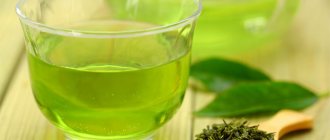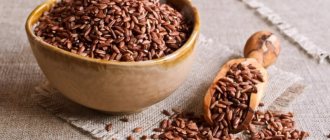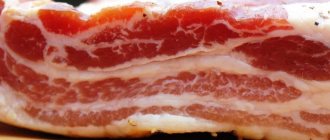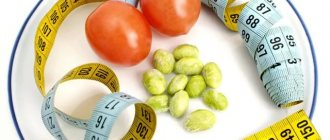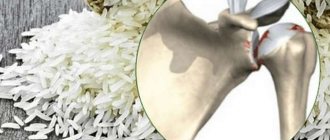Rice is a characteristic feature of the culture of Japan, Indonesia, India, and China. In Japan it replaces bread. It happens that the Japanese eat rice four times a day, including snacking on it. You rarely see fat people in Japan: out of 100 people, only three can be fat. Rice contains almost no salt, no saturated fat and no cholesterol. Does this mean that residents of countries whose diet is based on rice are “doomed” to be slim? Not at all.
In Chinese, the word “rice” has exactly the same meaning as the word “bread” in Russian. At the same time, over the past thirty years, the waist circumference of the male part of the Chinese population has been increasingly increasing. About 45 percent of the country's population is currently overweight. Scientists have noticed that an impressive group of fat people in China are representatives of the middle class.
Previously, the problem of overweight and obesity was prevalent only in high-income countries. According to statistics, in France 48.5 percent of adults are overweight, in the United States - 61 percent (especially in urban areas). Now this is also a problem in India and Indonesia.
What is the real reason for the growing problem of obesity in countries with an established culture of rice consumption? Maybe that's the problem? Can rice really make you fat? So why is it that in Japan only 3.7 percent of the population is considered to be at an unhealthy weight? Let's consider all these questions in detail. In this article we will figure out whether rice makes you fat.
What is rice?
This is a cereal crop characterized by a rich carbohydrate content (up to 70% in dry cereals) and a poor protein content (up to 12% in dry cereals). The composition does not contain gluten, a vegetable protein that causes allergic reactions. In total, more than twenty types of rice and more than one hundred varieties are known.
Rice is classified according to the method of grain processing:
- brown (brown, unpolished);
- white (polished);
- steamed.
Brown (brown, unpolished) does not contain fat-soluble vitamins. It contains only water-soluble vitamins B1, B2, B3 (PP), B5, B6, B9, as well as macro- and microelements (minerals). Brown rice is a grain that has retained its bran membrane, which means it retains its vitamins and nutrients. This is a product with a distinct taste and unique aroma.
White rice is highly processed rice. Compared to brown, it has few vitamins, minerals and a lot of starch. This rice is easy to prepare and affordable.
A few words about steamed rice. Thanks to steam treatment, it retains 80% more beneficial properties than simply polished or ground grains. The disadvantages of parboiled rice include increased starch content.
Glossy (fat) rice according to a recipe from Chengdu
Glossy (fat) rice according to a recipe from Chengdu
Glossy (fat) rice according to a recipe from the city of Chengdu (Laocheng dou yuyu fan, or - the second, shorter name - Yuyu fan) is an ancient Chinese dish of Sichuan cuisine, which has been known for more than 1000 years. Once upon a time it was a dish of the poor. The rice in this dish is prepared without meat, but is flavored with a dressing based on chicken broth and soy sauce with added spices, as well as rendered chicken fat. Soy sauce slightly tints the rice brown, and chicken fat gives the rice a buttery, glossy sheen. Ready-made hot rice takes on the wonderful taste of chicken and becomes very filling; one serving of this dish replaces a full meal for an adult. This dish has been a fixture on the Sichuan New Year’s table for many centuries. At the same time, traditional Chinese medicine does not recommend eating such dishes often, as they are extremely fatty and high in calories.
The dish is very simple to prepare, you need a minimum of ingredients, and your lunch will turn out to be quite budget-friendly.
Ingredients (for 2 servings):
- raw rice – 200 g,
- water – 400 ml,
- rendered chicken fat – 2-3 tbsp. (or to taste).
for refueling:
- light soy sauce – 125 ml,
- chicken broth – 125 ml,
- cloves – 1 bud,
- star anise (star anise) – 1 star,
- cinnamon – ½ stick,
- black cardamom (Cao Guo) – 1 pc.
First you need to prepare the dressing for the rice. It's very simple. In a suitable small saucepan (for example, Saucepan with lid (5-layer, stainless steel, aluminum) S Master 16 cm) pour chicken broth and light soy sauce in equal proportions.
Then add spices - cloves, star anise, cinnamon and black cardamom. Place the pan over medium heat and bring the liquid to a boil. Then reduce the heat to low and cook until about half of the liquid has evaporated. Then remove the pan from the stove and let the liquid cool without removing the spices from it.
Now you need to boil the rice.
Rinse the rice in several waters first.
Then pour water into another saucepan (for example, Alumite IH Happycall saucepan with ceramic coating 3003-1090, diameter 20 cm) and boil it. Place the washed rice into boiling water and let the water boil again. After boiling, stir the rice in the pan, reduce the heat to low and cover the pan with a lid. Cook the rice over low heat for about 10 minutes. Then remove the lid from the pan and stir the rice, making sure it is cooked.
Transfer the cooked rice to a wok (for example, Plasma IH Wok HappyCall 24 cm), add 2-3 tbsp. prepared sauce and 1-2 tbsp. rendered chicken fat. Place the wok over medium heat and stir the contents of the wok to combine the rice with the sauce and fat. The rice will turn light brown and become glossy. The dish is ready.
This rice can be served both as an independent dish and as a side dish for any Chinese dishes.
Best wishes, Your Corshop.
Which cereal should you choose?
The choice of one rice or another depends on the purpose for which it is intended. In cooking, the choice determines the intended dish. Rice should be crumbly or elastic, viscous or sticky, aromatic or with a minimally pronounced odor. “Devzira” is ideal for Uzbek pilaf, “Valencia” for paella, “Arborio” for risotto, etc.
For the purpose of diet therapy, the beneficial properties of rice play a leading role when choosing. For example, low-calorie and very filling wild rice has a rich and balanced composition of minerals, fiber, vitamins and high protein content. However, it grows only in North America and has a very considerable price. Black (Tibetan) rice is considered an aphrodisiac. Thai red rice (“cargo”), currently grown in France, is known for its beneficial properties. This product contains a large amount of antioxidants that neutralize the harm of toxic substances and carcinogens. Which rice to choose to lose weight? How does cereal affect weight? Let's look further.
Rice diet: history and modern challenges
The rice diet owes its discovery to the German scientist Walter Kempner, who in 1939 proved its effectiveness for medical purposes.
In numerous studies, Kempner found that people whose diet is based on rice have the least common diseases such as hypertension and diabetes. Walter Kempner suggested that the rice diet could be an effective way to successfully prevent high blood pressure, lose weight and treat kidney problems. The results of the studies, which included more than 18 thousand participants, exceeded all expectations. Patients thanked the nutritionist for their excellent health and attractive appearance.
Since then, many diets have been developed. But it is precisely the transformation, the slender figure as a clear result of eating rice, that has led to the fact that nowadays the rice diet is resorted to mainly for weight loss.
The benefits and harms of rice
In addition to improving metabolism and lower calorie content, rice has other advantages:
- improves the condition of hair, nails and skin;
- removes toxins and salts from the body;
- cleanses the intestines;
- is a source of energy;
- does not cause allergies due to the absence of gluten;
- helps strengthen the nervous system;
- reduces cholesterol levels;
- restores the intestines;
- stabilizes blood pressure;
- reduces the risk of developing acid-related and oncological diseases of the gastrointestinal tract.
Disadvantages include constipation, which occurs due to the high fiber content, and water imbalance. To prevent these problems, on “rice” days it is necessary to drink a sufficient amount of water, but not during meals, but at least 2 hours after meals.
In addition, increased consumption of cereals contributes to insufficient absorption of iron and calcium. This is another reason why you shouldn't eat too much rice per day.
It is recommended to give preference to grain from Russian producers. Foreigners often treat cereals with various chemicals to make them last longer and have a more attractive appearance.
The "dark" side of the rice diet
Modern nutritionists recommend treating a diet chosen for the purpose of losing weight with caution and warn that:
- rice, when consumed in excess, removes from the body not only harmful salts, but also potassium, which ensures the functioning of the heart;
- increased fiber content against the background of impaired water balance can lead to constipation;
- a strict rice diet excludes the intake of proteins, fats and carbohydrates in the required proportions.
It is advisable to make the decision to switch to a rice diet after consulting with your doctor. Rice should not be consumed in significant quantities by people suffering from cardiovascular diseases, kidney failure, pathologies of the gastrointestinal tract, those who have had colds, as well as pregnant and lactating women.
Types of rice diets for weight loss
Such a diet can be designed for three, five, seven or more days. You need to lose weight gradually, but efficiently. Therefore, the choice of diet determines a lot:
- The protein-rice diet is designed for five days. Breakfast - 250 grams of boiled rice, after lunch - 300 grams of seafood.
- Buckwheat-rice diet. It lasts three to five days. Breakfast and dinner - vegetables, during the day - boiled buckwheat and rice. One of the best options for those who plan to lose weight.
- "Black" diet. Five to seven days. Three to four servings per day. 250 grams of brown and 30 grams of black or wild rice.
- "A week." Lasts seven days. Boiled rice and vegetables, fruits as an exception.
- "Strict." Two or three days. One glass of boiled rice per day. Plus a green apple or freshly squeezed apple juice.
The most popular rice diets
There are many rice-based diets. Many eminent nutritionists include “rice” days in their proprietary nutritional methods for weight loss.
All of them involve the consumption of unrefined grains without salt, sugar, spices, boiled in water.
This diet should be followed for no more than a week:
- Breakfast: 2 tbsp. spoons of boiled rice. The cereal is soaked in the evening, washed thoroughly in the morning and slightly undercooked.
- Lunch: in 4 hours. Includes low-carbohydrate foods: steamed or boiled vegetables, lean boiled meat in small quantities.
- Dinner: 2 tbsp. spoons of boiled rice.
The diet is designed for 5 days:
- Breakfast: a handful of boiled rice.
- Lunch is skipped.
- Dinner: boiled fish fillet without oil and salt.
This diet should be followed for 7 days:
- You are allowed to eat rice with vegetables three times a day.
- In this case, there should be less cereals than vegetables.
- It is acceptable to add soy sauce and olive oil.
Nine-day diet:
- Days 1-3: 250 gr. boiled rice, 2 liters of water, 3 tsp. honey Cereals are consumed for 6 meals.
- Days 4-6: kilogram of boiled chicken carcass, 2 liters of water, 3 tsp. honey Divide the meat into 5 servings.
- Days 7-9: kilogram of apples, 3 tsp. honey, 2.5 liters of water.
Rice mono diet:
- You are only allowed to eat a glass of rice per day. When cooked, its volume will increase significantly.
- It is recommended to use it as a deload for no longer than three days in a row.
- To compensate for nutritional deficiencies, vitamin complexes must be taken during the diet.
Rice "reefs"
Do boiled rice make you fat? Eating grains on water definitely doesn’t make you fat. Especially if unprocessed cereals are chosen for weight loss, and they are prepared without adding salt and spices. When rice is cooked, the number of calories in it is significantly reduced. A portion of 150 grams per day is safe for your figure.
Does boiled rice in water make you fat if you eat the product for dinner? Since this is a carbohydrate product, it is better to eat it in the morning, for breakfast or lunch.
What is in rice
The composition of the cereal is varied. It contains 8 amino acids involved in the creation of new cells.
Cereals are rich in fiber and beneficial microelements:
- potassium;
- phosphorus;
- calcium;
- magnesium;
- sodium;
- iron;
- manganese;
- zinc;
- copper;
- selenium;
- B vitamins.
The main component of the product is carbohydrates. There are 100 gr of them. grains about 80 g. 7-8% are proteins. The rest: water, dietary fiber, fats, ash in small quantities.
How not to gain weight?
White round short rice, along with white bread, sugar and pastries, is one of the main sources of fast carbohydrates. Fast (simple) carbohydrates have a high glycemic index. The glycemic index determines the degree to which blood sugar rises when eating food. The more sugar, the higher the release of insulin.
If you eat white round short rice for a long time, then:
- the body will get used to high insulin production;
- insulin will quickly transfer sugar from the blood and cause a constant feeling of hunger (due to insufficient glucose in the blood);
- a person will begin to consume more food than necessary, and this will lead to excess weight gain.
Does rice make you fat? The white round short rice diet requires mandatory physical activity. If you play sports, you definitely won’t gain weight from this product, nutritionists say.
Long grain white rice is composed of amylose. It has a lower glycemic index. The long grain white product also contains resistant starch. Does rice make you fat? This product is healthier and less likely to contribute to obesity.
How does rice help you lose weight?
It's all about the variety of rice crops, as well as the shape of the grains themselves, on which the fiber content in their composition depends. For dietary nutrition, it is important to choose long-grain rice, since it retains the largest amount of beneficial compounds due to the specific processing, and also contains several times less starch. Depending on the type of rice, the quality of carbohydrates changes - they can be simple or complex. The most popular variety of rice is white (from round to long grains), it is most often used in cooking in different countries. The universal taste of this cereal allows you to prepare even sweet desserts, because 4% of it is sugar. However, there is also a healthier variety that has a more pronounced taste, but is less popular. For some unknown reason, even people who are losing weight avoid it. And it was done in vain.
Brown or brown varieties of rice are a source of slow carbohydrates. It takes the body more time to process them, and therefore the feeling of fullness lasts longer than usual. White varieties work differently: simple (or fast) carbohydrates are broken down many times faster, processed into glucose and sent to form a layer of subcutaneous fat, and the stomach again turns out to be empty and requires reinforcement. The long-lasting properties of brown rice, as shown by medical research, can accelerate fat burning and increase the overall endurance of the body. In other words, a serving of rice allows you to be well fed and forget about hunger for a long time, which naturally reduces the caloric content of your daily diet.
Find out the causes of excess weight and ways to quickly lose weight
Sign up for a free initial
appointment with a nutritionist!
The fewer calories we eat, the more effectively we lose weight. But here it is important not to go to extremes: remember that the minimum threshold is 800 kcal per day if energy costs are up to 1500 kcal (for example, with a sedentary lifestyle - passive weight loss). By the way, due to the fiber content, the rice diet serves to lose weight and cleanse the body at the same time. The thing is that the “right” varieties of rice are enriched with fiber - dietary fiber, which is easily digestible and very delicately cleanses the intestines, relieving constipation. Fiber helps you feel fuller longer and lowers blood sugar levels by normalizing insulin production. That is, the less of this hormone enters the blood, the less fat is deposited in the body “in reserve.”
Food culture. Can you gain weight from rice?
Why are the Chinese getting fat? From rice in water or from what is added to it? In China, vegetables, sauces, and seasonings are commonly added to cereals. The Chinese also love sea fish, sea animals, pork and poultry. The Chinese love for high-calorie foods is aggravated by European fast food. Do Chinese people get fat from white rice? Not a fact, nutritionists say.
Is it possible to get better from rice on water? It all depends on what kind of diet containing this cereal you choose, what type of cereal you eat, for how long and whether there is physical activity.
Is it possible to gain weight from rice - decisive factors
The greatest amount of useful substances is found in unprocessed and sea rice. After peeling, removing the shell and heat treatment, the cereal loses a significant part of its beneficial properties. Therefore, for dietary purposes it is better to use an unrefined product.
But this only applies to people who lead an active lifestyle. If you eat white rice before bed or do not combine its consumption with physical activity, glucose will turn into fat.
Excessive use of the product in food will also not lead to weight loss. To maintain weight, you are allowed to consume no more than 250 grams per day. grains Dietary food implies no more than 200 grams. cereals per day. It must be remembered that a calorie deficit is necessary for weight loss. Therefore, rice consumption should take into account the energy content of other foods eaten.
An important point is the method of preparing the grain. The best option would be a slightly undercooked and chilled dish without salt, sugar or other additives. The cereal is also cooked in the oven or steamed until half cooked.
As you know, carbohydrates provide a feeling of satiety for a long period of time, and also accumulate harmful substances in the body, cleansing it. Therefore, it becomes unclear why lovers of this product are gaining weight. The answer lies in several important nuances that distinguish the Russian culture of eating rice from, for example, the Chinese.
Firstly, the form of processing of the cereal matters. Stores everywhere sell white rice that has undergone heat treatment and has lost most of its beneficial properties. The grain shell contains the largest amount of useful substances.
Secondly, the method of preparing the product, which uses oil, saturated broths, and a large number of spices, a priori cannot be dietary. In addition, many women serve porridge with tomato meat sauces, which are not included in any diet.
Thirdly, the amount of serving. Saturation for several hours occurs after consuming 100 g of the finished product. Eating kilos of it, even if you choose the right type of rice and method of cooking it, the answer to the question of whether you can gain weight from rice will be definitely positive. In this case, the cereal will definitely cause constipation and harm not only the waist, but also health in general.
https://www.youtube.com/watch?v=l2EzaIZ6hhs
Secondly, the method of preparing the product, which uses oil, saturated broths, and a large number of spices, a priori cannot be dietary. In addition, many women serve porridge with tomato meat sauces, which are not included in any diet.
